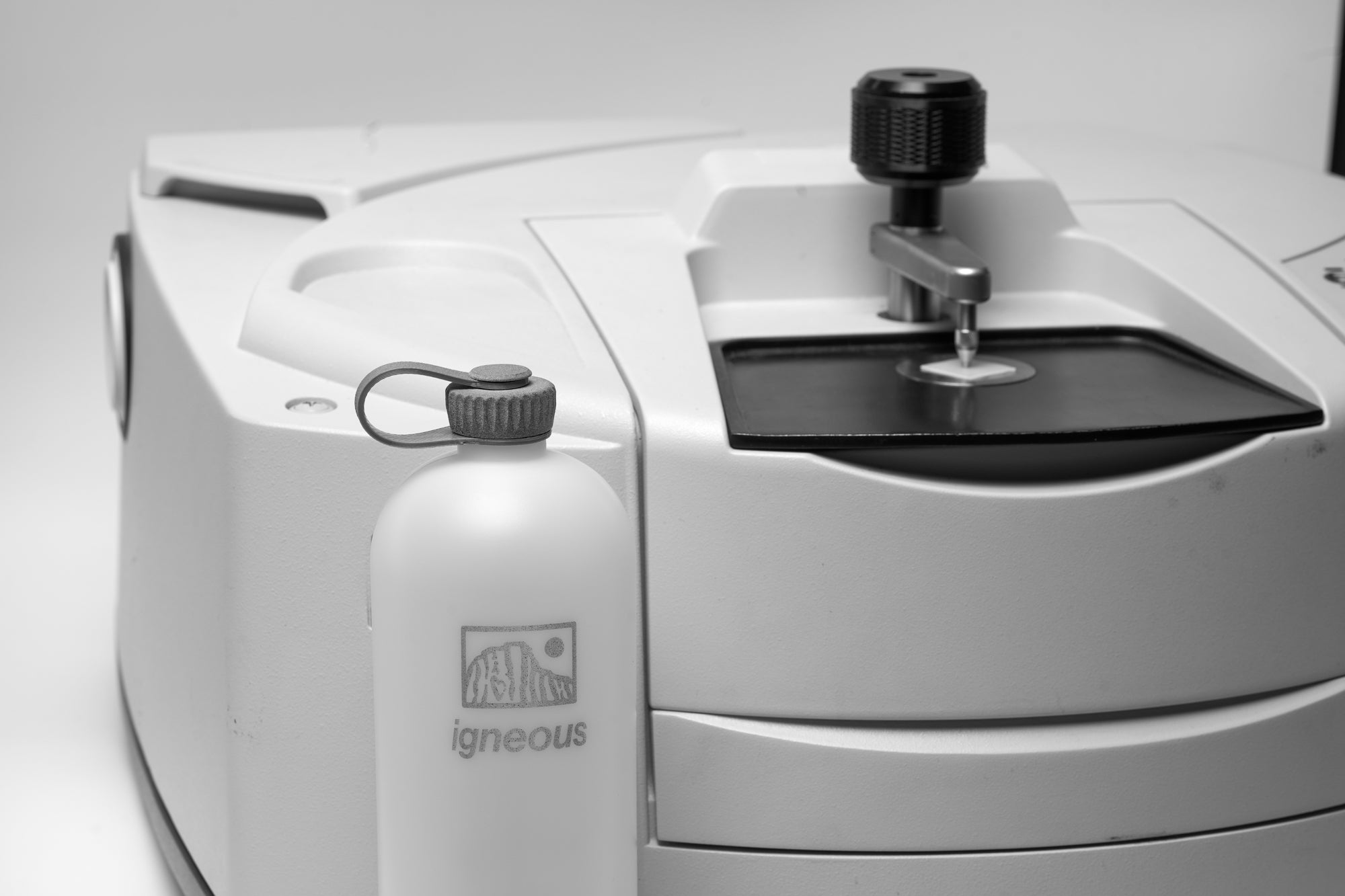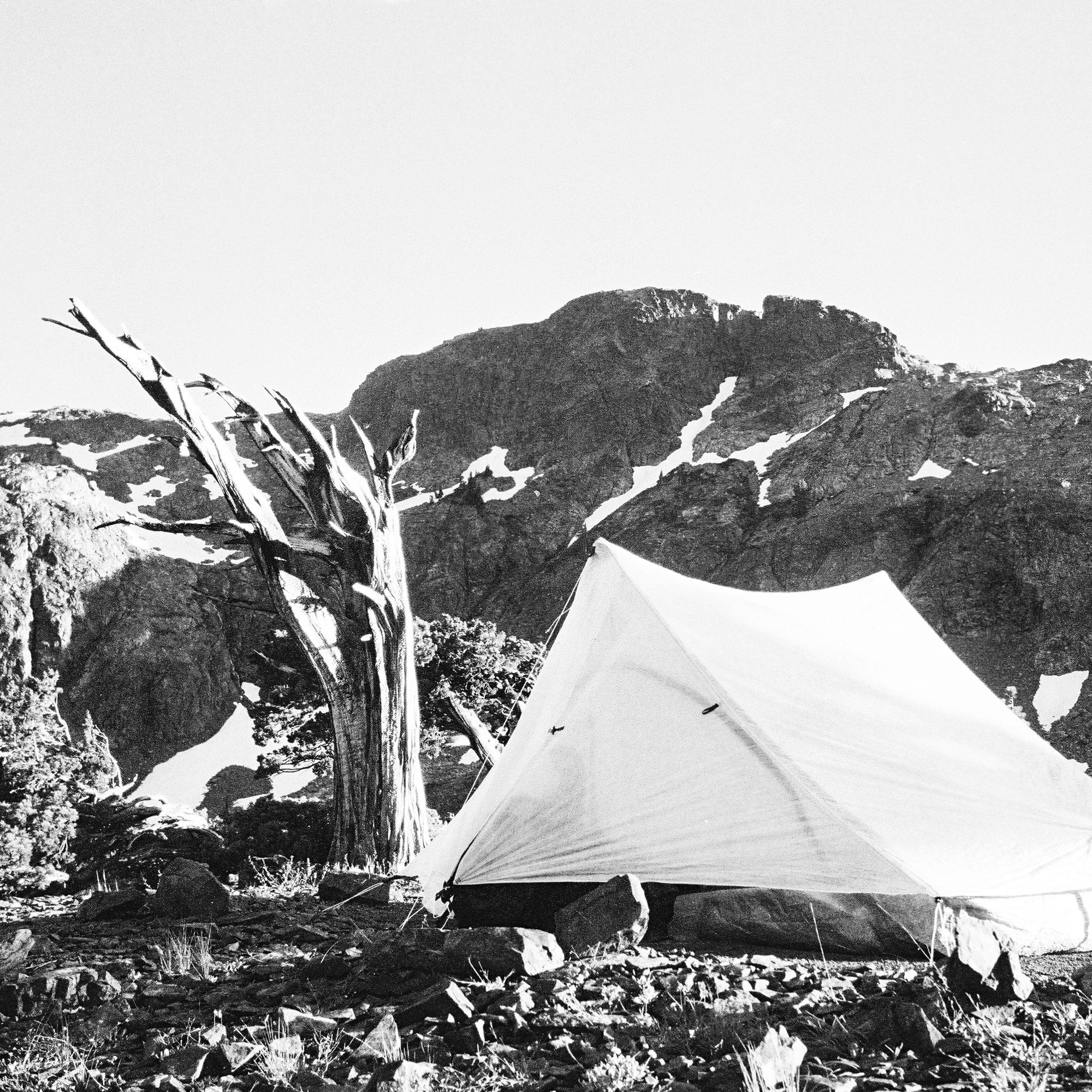What actually fails in the field
Most trail repairs fall into two buckets: woven-fabric tears/abrasion (packs, apparel, fly canopies) and TPU punctures or pinholes (sleeping pads, water bladders). Using one “do-everything” patch is why many fixes peel—substrates behave differently. Igneous separates these use cases into Threadlock for fabrics and Airlock for TPU so the adhesive and carrier match the job.
Threadlock (for woven fabrics)
- Construction: Woven polyester + proprietary pressure-sensitive adhesive, 0.14 mm total thickness.
- Backing: Two-piece waxed paper liner for controlled placement.
- Pack size: 36 × 28 mm (single size). Retail pack: 12 pcs.
- Best for: Packs, jackets, tent canopies, stuff sacks, and other woven nylon/poly surfaces.
Why it works: the woven face flexes like the host fabric, while the PSA wets out the weave for a durable bond. In cold conditions, rub the applied patch to add a little heat and improve wet-out.
Airlock (for TPU films & inflatables)
- Construction: TPU film + proprietary pressure-sensitive adhesive, 0.16 mm total thickness, transparent finish.
- Backing: Two-piece waxed paper liner (same easy-apply method).
- Pack size: 36 × 28 mm (single size). Retail pack: 8 pcs.
- Best for: Inflatable pads, water bladders, TPU-coated fabrics and similar smooth films.
Why it works: TPU-to-TPU compatibility plus a PSA tuned for smooth, non-porous surfaces keeps edges seated under inflation/deflation cycles.
Why the two-piece liner matters
Both patches use a split, waxed paper backing so you can peel one half, align, press, then roll away the second half without the patch grabbing prematurely. That control is the difference between a flat, edge-sealed patch and a wrinkled one that lifts.
Surface prep that actually helps
- Best: Wipe with isopropyl alcohol, let the surface fully dry.
- Okay: Rinse with clean water if alcohol isn’t available; dry completely before patching.
- Avoid on the surface before patching: Oils, sunscreen, DEET, chlorine residue, or any contamination—clean first for maximum adhesion.
Application steps (fast, repeatable)
- Center: Position the patch over the damage (use the split liner to place precisely).
- Press: Remove the second liner half and lay the remainder, smoothing from the center out to purge air.
- Burnish: Use firm thumb pressure, rubbing back and forth for ~20 seconds. In cold conditions, this rubbing also adds warmth to boost initial tack.
- Shape (optional): If you cut patches smaller, round the corners for a more durable edge.
Immediate use: You’ll get most of the performance instantly.
Full cure: Adhesive reaches full strength after ~4 hours. If possible, avoid water exposure during that period.
Overlap & bigger repairs
For long or jagged damage, use multiple patches with ~5 mm overlap between them, keeping edges flat and well-burnished. On fabrics, a light stitch line across a large tear can add structure; cover stitches with Threadlock to protect from abrasion.
Limitations & edge cases
- Silicone-coated fabrics (silnylon/silpoly): Adhesion is poor for most PSAs. Use stitching as the primary fix and cover with a patch to shield stitches.
- DWR-heavy shells or oily surfaces: Clean thoroughly—residual finishes and oils reduce wet-out.
- Cold application: Patches still work, but burnish longer to warm the adhesive and improve bond.
Chemical & environmental notes
After proper prep and cure, patches tolerate common trail exposures (sunscreen, alcohol, chlorine). The key is clean, dry surfaces at application; contamination present during application is the real failure driver.
Quick reference (sizes & counts)
- Threadlock: 36 × 28 mm, 0.14 mm thick, 12 pcs per pack.
- Airlock: 36 × 28 mm, 0.16 mm thick, 8 pcs per pack.
- Adhesive: Proprietary pressure-sensitive, optimized for listed substrates.
- Cure: Usable immediately; reaches full strength at ~4 hours.
FAQ
Can I patch a wet pad or rain-soaked pack? Dry the surface first. Moisture under the patch compromises adhesion.
Will these hold on high-shear spots (seams/corners)? Yes, but increase patch footprint and burnish thoroughly; consider a supporting stitch on fabrics.
Are they clear? Airlock is transparent; Threadlock is a woven fabric patch.
Do I need heat tools? No. These are pressure-sensitive patches; rubbing adds helpful warmth in cold weather but no iron is required.
Patch Lab — Trail Repair Simulator
Three trail mishaps. Choose the right fix at each step and get a 10% off code.
Nice work.
Here’s your reward: PATCH10 for 10% off.
Threadlock for woven fabrics. Airlock for TPU. Usable immediately; full strength after ~4 hours.



